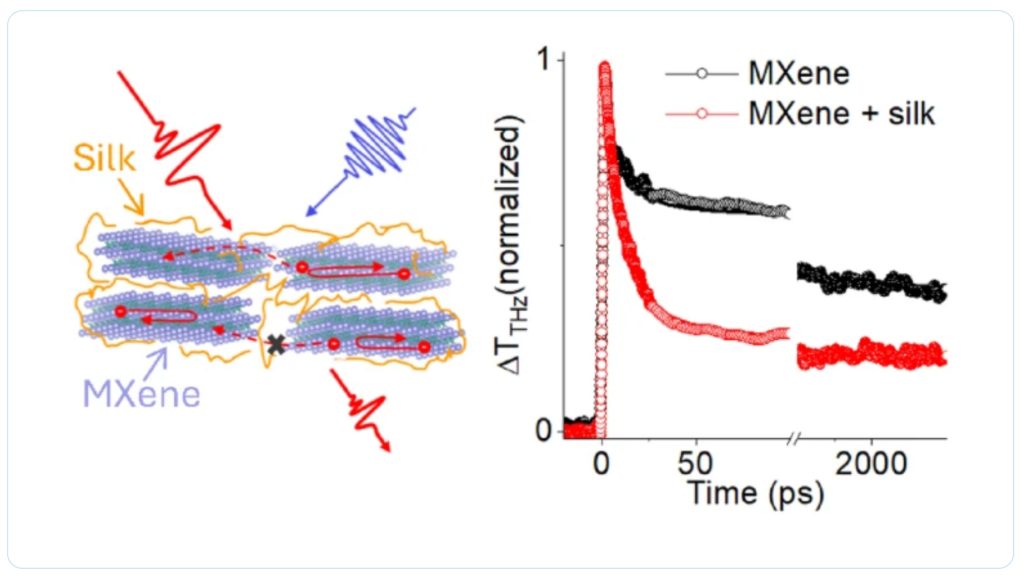Andrew Fitzgerald1, Laura Londoño Fandiño1, Kateryna Kushnir Friedman1, Tom Kohen1, Nikoloz Gegechkori1, John Obayemi2, Sepideh Khanmohammadi1, Alireza Nikbakht2, Michael Zajac1, Vladimir Gayduchkov1, Yehia Khalifa3, Joshua Uzarski4, Ivan Baginskiy5, Veronika Zahorodna5,Oleksiy Gogotsi5,6, Ronald L. Grimm3, Jeannine M. Coburn2 & Lyubov V. Titova1
Abstract
MXenes, a class of two-dimensional transition metal carbides and nitrides known for their high electrical conductivity and stability, are considered promising materials for flexible and wearable electronics, as well as for electromagnetic interference (EMI) shielding. In this study, we investigate MXene-silk composites using terahertz (THz) time-domain spectroscopy and time-resolved techniques. Our main focus is on Ti₃C₂Tₓ MXenes integrated with silk fibroin films, aiming to develop materials with adjustable electronic and thermal characteristics.
The composite films maintain electrical conductivity when prepared from aqueous solutions containing up to 2 mg of silk per 1 mg of MXene. However, their direct current (DC) conductivity decreases by more than four orders of magnitude compared to films made solely from MXenes. In contrast, the high alternating current (AC) conductivity in the THz range and EMI shielding efficiency are largely preserved, as these parameters are primarily governed by electron transport within the individual flakes and are less sensitive to the increased spacing between them.
Time-resolved THz spectroscopy reveals that optical excitation of both pure MXene films and MXene-silk composites leads to a temporary increase in THz transmission due to thermally induced suppression of conductivity. Moreover, silk encapsulation accelerates the thermal recovery process. As a result, the DC conductivity and thermal behavior of MXene-silk composites can be effectively tuned by adjusting the silk fibroin content, without significantly affecting their EMI shielding capabilities in the THz frequency range. This tunability paves the way for developing biocompatible electronic materials with customizable properties tailored to specific applications.
